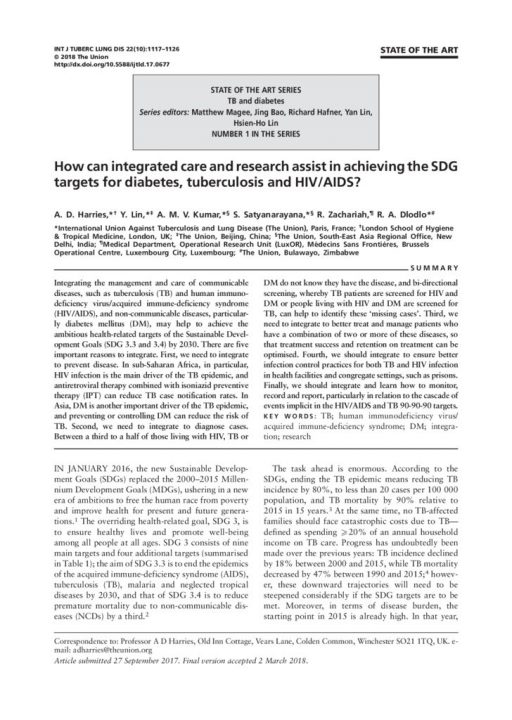
How can integrated care and research assist in achieving the SDG targets for diabetes, tuberculosis and HIV/AIDS?
Summary
Integrating the management and care of communicable diseases, such as tuberculosis (TB) and human immunodeficiency virus/acquired immune-deficiency syndrome (HIV/AIDS), and non-communicable diseases, particularly diabetes mellitus (DM), may help to achieve the ambitious health-related targets of the Sustainable Development Goals (SDG 3.3 and 3.4) by 2030. There are five important reasons to integrate.
First, we need to integrate to prevent disease. In sub-Saharan Africa, in particular, HIV infection is the main driver of the TB epidemic, and antiretroviral therapy combined with isoniazid preventive therapy (IPT) can reduce TB case notification rates. In Asia, DMis another important driver of the TB epidemic, and preventing or controlling DM can reduce the risk of TB.
Second, we need to integrate to diagnose cases. Between a third to a half of those living with HIV, TB or DM do not know they have the disease, and bi-directional screening, whereby TB patients are screened for HIV and DM or people living with HIV and DM are screened for TB, can help to identify these ‘missing cases’.
Third, we need to integrate to better treat and manage patients who have a combination of two or more of these diseases, so that treatment success and retention on treatment can be optimized.
Fourth, we should integrate to ensure better infection control practices for both TB and HIV infection in health facilities and congregate settings, such as prisons.
Finally, we should integrate and learn how to monitor, record and report, particularly in relation to the cascade of events implicit in the HIV/AIDS and TB 90-90-90 targets.
